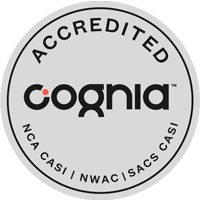
Here’s a tricky riddle for you.
What’s something everyone knows is an important tool for obtaining good grades, but few hardly utilize? And even fewer actually enjoy doing this one thing.
OK, maybe it’s not that great a riddle. Considering this subject revolves around schoolwork, there can be a number of answers. But the one we have in mind is taking notes.
It might be surprising that there are, in fact, multiple ways to take notes. And, depending on your style, there are a right and a wrong way to take notes.
While there are several different methods, we’ll focus on the four ideas based on our teacher’s suggestions and input. Each has its benefits and downsides, it just depends. All have the ability to customize, so you develop your personal learning style. Check them out:
The “write down what you hear” method
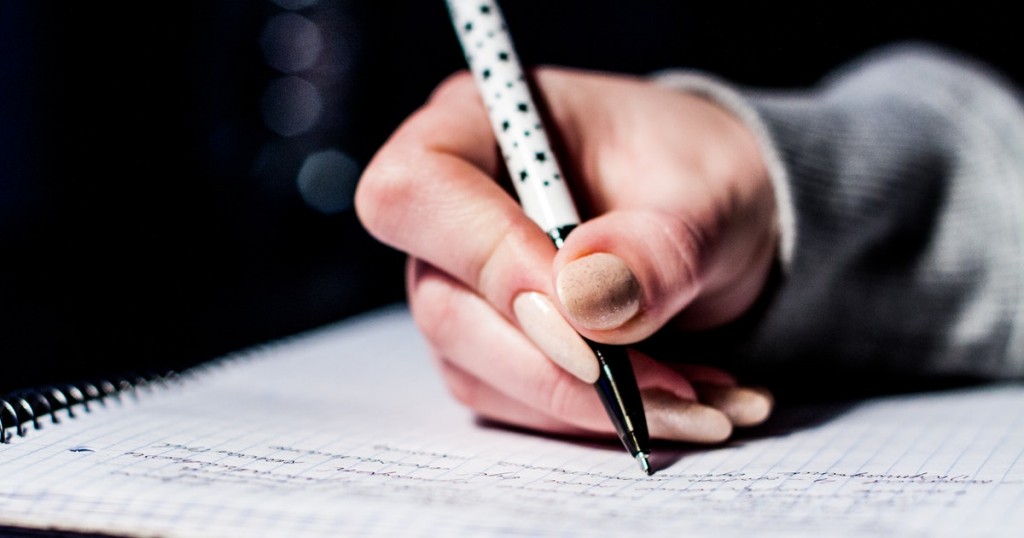
The write-down-everything-as-fast-as-you-can style works for very few, but it seems to be everyone’s go-to.
With this approach, you watch a video, read a lesson or hear a lecture and try to write down everything. You’ll likely end up short-handing a lot in order to keep up, which means you’re and probably not taking the time to comprehend what you’re writing.
If you are an incredibly fast typer, maybe you can write down everything you hear. Even then, it’s probably best to focus on what you find important.
If you do like to write down most of what you hear in order to have more resources later for studying, there’s a workaround. Primavera English teacher Ashley Skolrud is one who likes to write notes using a version of this method. Here’s how she does it.
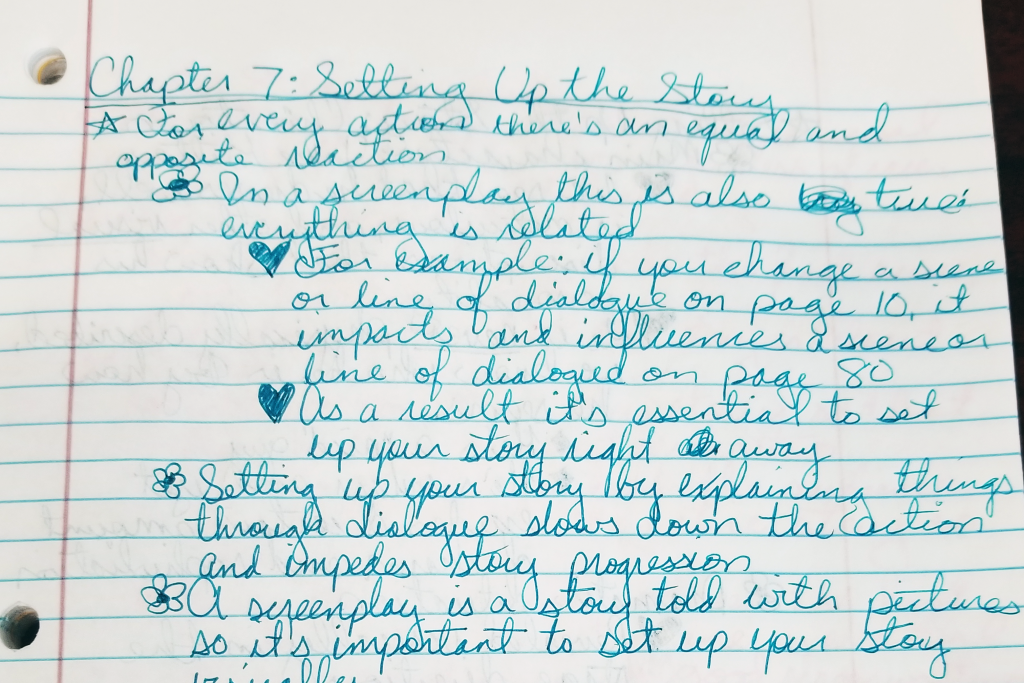
photo submitted by English teacher Ms. Skolrud
“I personally am a read/write learner so, as a result, I write down a lot more than most people probably would think to. My personal notetaking style is I just jot down what I think is important in an outline format, said Ashley. “Typically this involves new words/definitions, things that I think are interesting/important, or things that the author has bold/italic/underlined/repeated.”
As you’re reading through lessons, pay attention to the bolded words, and try to write your own definitions. You can always refer back to the lesson for the actual definition and writing in your own words helps you comprehend and remember.
When to use this note-taking method:
You’re a fast writer/typer and paraphrase well
You don’t mind taking time to thoroughly read through notes later.
Why you might not use this method:
You don’t write or type quickly
You often get stressed about missing key points
Reading notes is difficult for you and you’d prefer to scan
Visual Outline Method
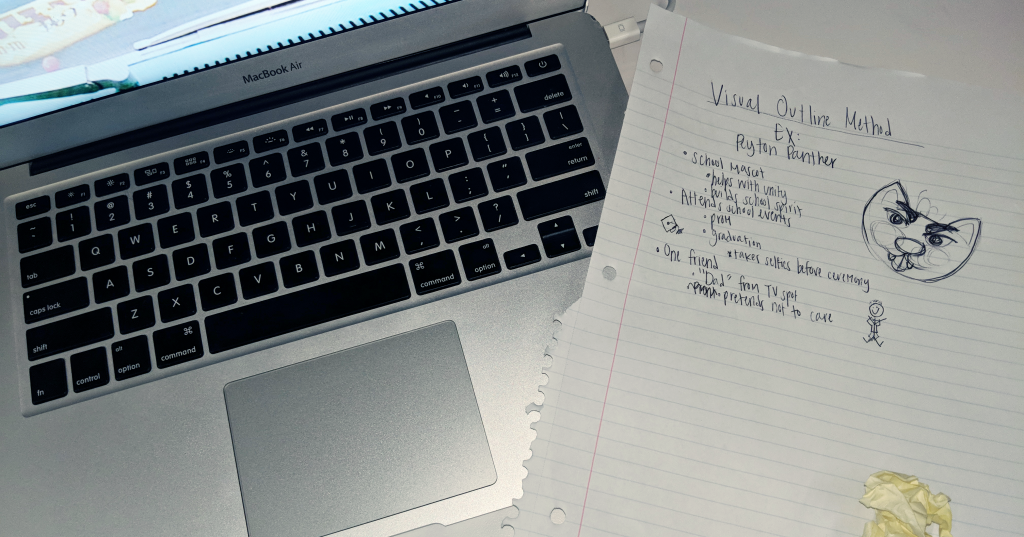
Before you head to your tablet or computer for taking notes, you might want to consider the good ol’ fashioned notebook. It’s believed that physically writing notes helps you retain information better.
It’s debated, though, because typing allows you to take more notes since most type faster than they write. The best advice? Try both and see which truly helps you learn.
Another benefit of physical notes is that you get to doodle. Studies say that drawing pictures that associate with the topic can help you.
If you feel you’re more of a visual learner and you enjoy drawing, try out the visual outline method. Here’s how you’d format your notes:
- Topic or keypoint
- Sub point
- supporting points (if needed)
- Sub point
- Topic or keypoint #2
- sub point
- supporting points
- sub point
And so on and so forth. Each time you have a new topic or keyword, draw something to go along with it.
For example, let’s say you were learning about Peyton Panther. Your notes might look like this:
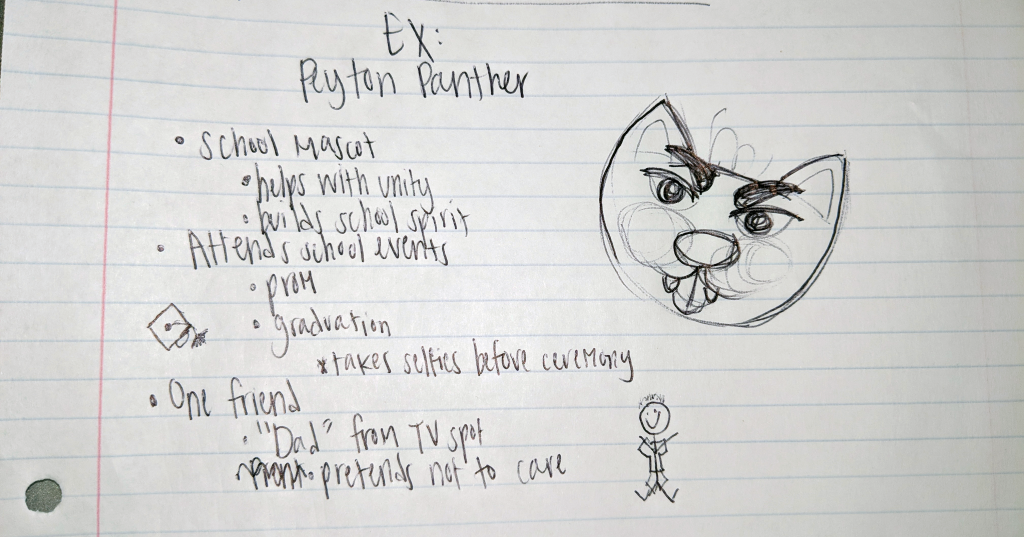
English teacher Isha Rupal is a fan of the outline method. Her personal customization is what she calls “prioritization.” Find what matters and break it down.
“I try to keep things mentally and physically organized based on whether I categorize them as big ideas, supporting details, examples of the supporting details, exceptions to the rule, etc. So, as an example, my written notes might look like this:
- Spongebob Squarepants
- Lives in a pineapple under the sea
- Two windows, one door
- Neighbors are Sandy and Squidward
- Works at Krusty Krab
- Best friend is Patrick Star
- Kind of an idiot
- “East? I thought you said Weast!”
- “Is mayonnaise an instrument?”
- Kind of an idiot
- Lives in a pineapple under the sea
When to use this note-taking method:
during a long lecture with several points of discussion
You have a hard time paying attention and often find yourself doodling
You like to paraphase
Why you might not use this method:
You’re a perfectionist and drawing might take too much of your focus
You don’t enjoy drawing
There are a lot of keywords in the lecture
If it is a keyword-heavy lesson, this method could still work. But you might want to break down your notes a little differently. Ms. Skolrud suggests this layout:
| Unknown word | Definition | Picture |
|---|---|---|
| Peyton Panther | School mascot, spirit enthusiast |
The Cornell Method
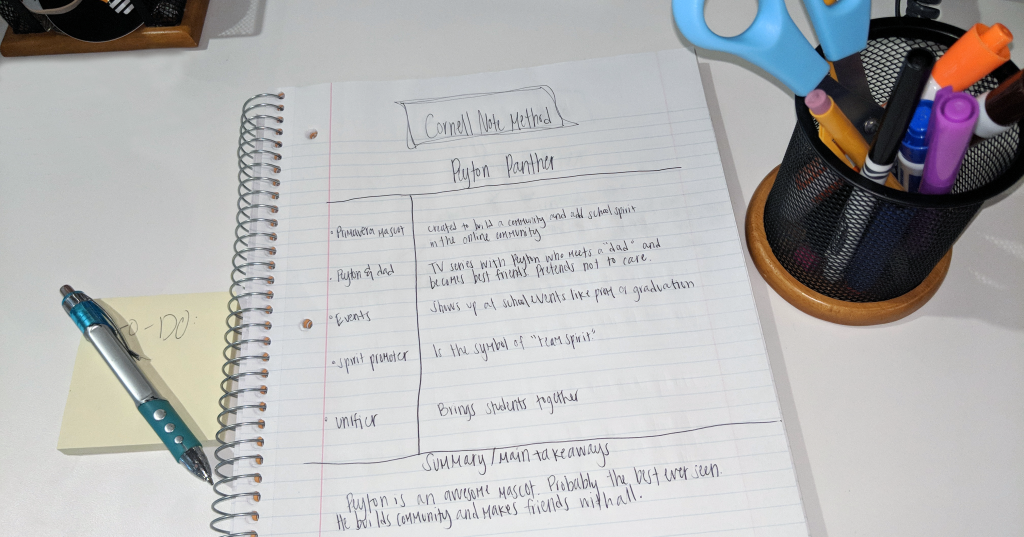
This is a note-taking method that’s either loved or hated by most. Some swear by this approach while others find it too constraining.
If you’re in a science-based course or going through a lesson with a lot of bold points, this could be the best method. With the Cornell method, you separate your paper into one skinny column on the left, a large column on the right, and a row at the bottom. It’s formatted as such:
- Title
- Left column of keywords
- Right column with notes, takeaways
- Bottom row with a summary
If you wanted to take your notes about Peyton Panther using this method, it’d look something like this.
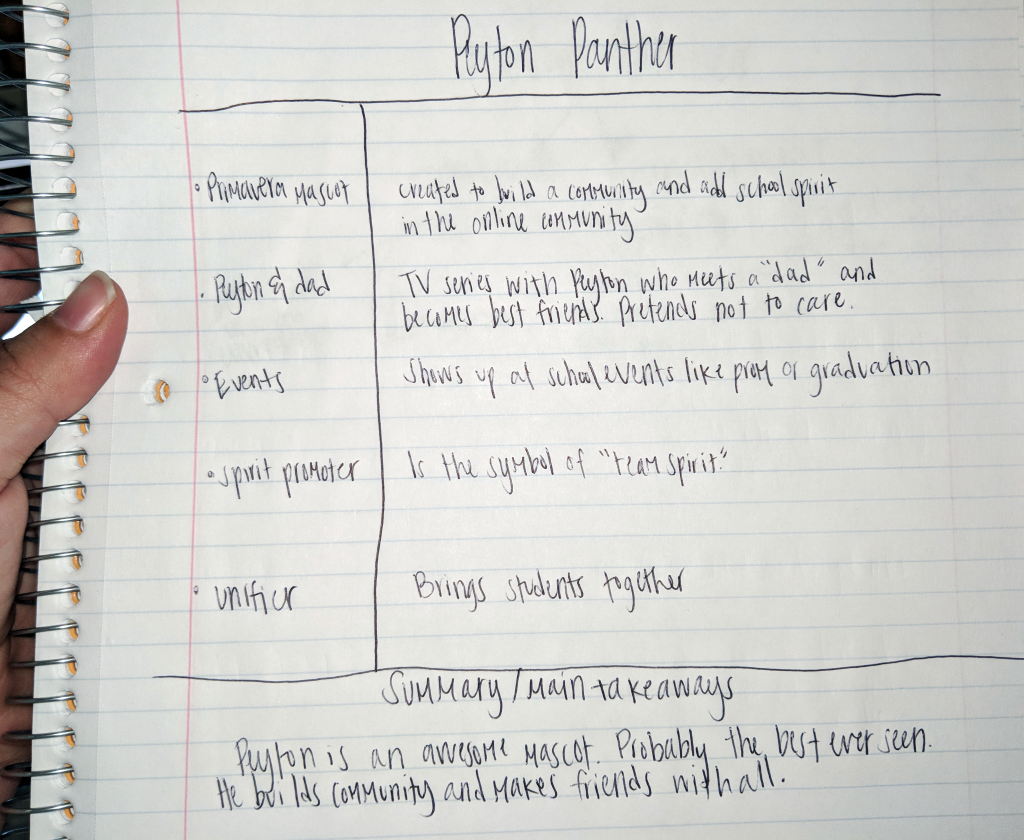
Here’s how Primavera social studies teacher Brandon Welch customizes the Cornell method:
“I mostly teach middle schoolers so I try and keep it simple when telling them to take notes,” said Mr. Welch. “My advice to them is usually to take notes in an organized way that you can easily refer back to and extract information from, but at the same time take notes in a way that is comfortable and fun for you personally. This template leaves that door open for them to organize their thoughts but do it in an interactive and freelance way.”
When to use this note-taking method:
There’s a lot of terms and keywords to learn
You want to memorize keywords or definitions
Why you might not use this method:
The lesson has several different topics and breaking it down is difficult
You don’t feel confident in scanning and filtering information in lessons
The Branching Method
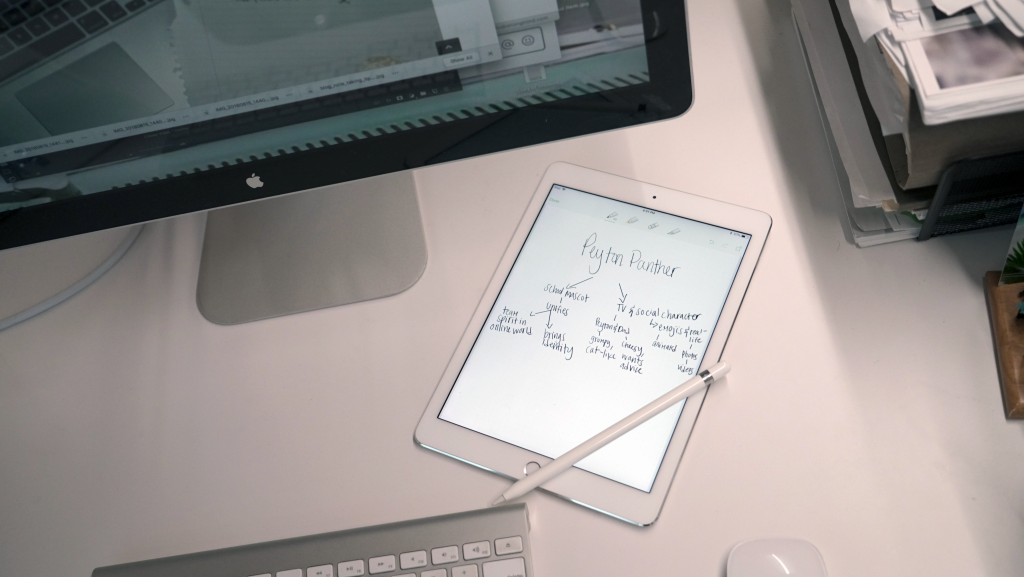
This method is great for breaking down complex lessons. If you are learning a few different things that relate to each other, like the different nervous systems within the body, this can help you jot down notes in a way that helps you see things a little simpler.
Notice that all these can be written digitally, even if you want to doodle. Use an app that lets you work with a stylus, so you can take notes how you want.
Back to the example of Peyton Panther. If you were learning about the mediums in which one might see Peyton, this is how the branch method would look.
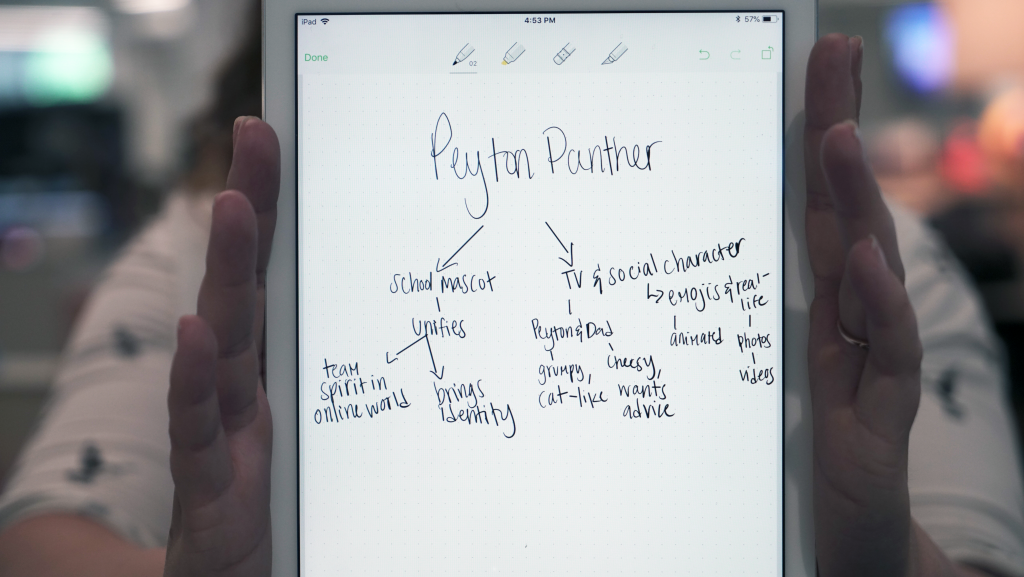
You can also color code topics as you take notes. This will make it easier to review your notes when you go back later.
We’ll leave you with one more idea on note-taking from Principal Donald Mitchell, who is currently an online student himself as he earns his doctoral degree.
Everyone has his or her own preferred method of taking notes. Some prefer to jot down short phrases, some prefer to write down single words, while some prefer to record snippets on an audio recorder. Whichever way you chose to take notes, make sure it is a method that works best for you.
Currently, I am a student at Grand Canyon University pursuing a Doctoral Degree, and I am required to read hundreds of documents related to my chosen topic of study. To notate the information relevant to my study, I use a two-step method. In the first step of my method, as I am reading an article, I highlight information that is interesting and related to the topic I am studying, and that would fit into my writing.
Once I have finished reading the article, I transfer all of the information that I have highlighted in a Microsoft Excel Spreadsheet to keep track of the information.
For some, this may seem like a complicated process. You can remove the Microsoft Excel Spreadsheet step and simply highlight the article you are reading. This good thing about highlighting is that you can highlight on paper and electronically if you are using a computer.

